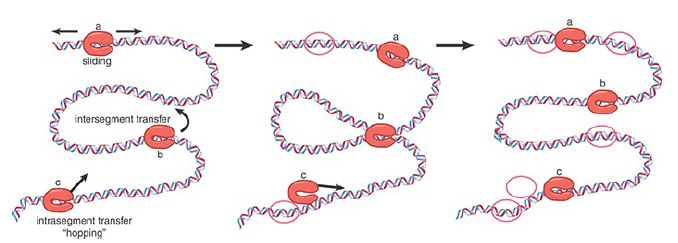

النبات

مواضيع عامة في علم النبات

الجذور - السيقان - الأوراق

النباتات الوعائية واللاوعائية

البذور (مغطاة البذور - عاريات البذور)

الطحالب

النباتات الطبية


الحيوان

مواضيع عامة في علم الحيوان

علم التشريح

التنوع الإحيائي

البايلوجيا الخلوية


الأحياء المجهرية

البكتيريا

الفطريات

الطفيليات

الفايروسات


علم الأمراض

الاورام

الامراض الوراثية

الامراض المناعية

الامراض المدارية

اضطرابات الدورة الدموية

مواضيع عامة في علم الامراض

الحشرات


التقانة الإحيائية

مواضيع عامة في التقانة الإحيائية


التقنية الحيوية المكروبية

التقنية الحيوية والميكروبات

الفعاليات الحيوية

وراثة الاحياء المجهرية

تصنيف الاحياء المجهرية

الاحياء المجهرية في الطبيعة

أيض الاجهاد

التقنية الحيوية والبيئة

التقنية الحيوية والطب

التقنية الحيوية والزراعة

التقنية الحيوية والصناعة

التقنية الحيوية والطاقة

البحار والطحالب الصغيرة

عزل البروتين

هندسة الجينات


التقنية الحياتية النانوية

مفاهيم التقنية الحيوية النانوية

التراكيب النانوية والمجاهر المستخدمة في رؤيتها

تصنيع وتخليق المواد النانوية

تطبيقات التقنية النانوية والحيوية النانوية

الرقائق والمتحسسات الحيوية

المصفوفات المجهرية وحاسوب الدنا

اللقاحات

البيئة والتلوث


علم الأجنة

اعضاء التكاثر وتشكل الاعراس

الاخصاب

التشطر

العصيبة وتشكل الجسيدات

تشكل اللواحق الجنينية

تكون المعيدة وظهور الطبقات الجنينية

مقدمة لعلم الاجنة


الأحياء الجزيئي

مواضيع عامة في الاحياء الجزيئي


علم وظائف الأعضاء


الغدد

مواضيع عامة في الغدد

الغدد الصم و هرموناتها

الجسم تحت السريري

الغدة النخامية

الغدة الكظرية

الغدة التناسلية

الغدة الدرقية والجار الدرقية

الغدة البنكرياسية

الغدة الصنوبرية

مواضيع عامة في علم وظائف الاعضاء

الخلية الحيوانية

الجهاز العصبي

أعضاء الحس

الجهاز العضلي

السوائل الجسمية

الجهاز الدوري والليمف

الجهاز التنفسي

الجهاز الهضمي

الجهاز البولي


المضادات الميكروبية

مواضيع عامة في المضادات الميكروبية

مضادات البكتيريا

مضادات الفطريات

مضادات الطفيليات

مضادات الفايروسات

علم الخلية

الوراثة

الأحياء العامة

المناعة

التحليلات المرضية

الكيمياء الحيوية

مواضيع متنوعة أخرى

الانزيمات
How Does RNA Polymerase Find Promoter Sequences
المؤلف:
JOCELYN E. KREBS, ELLIOTT S. GOLDSTEIN and STEPHEN T. KILPATRICK
المصدر:
LEWIN’S GENES XII
الجزء والصفحة:
3-5-2021
2564
How Does RNA Polymerase Find Promoter Sequences
KEY CONCEPTS
- The rate at which RNA polymerase binds to promoters can be too fast to be accounted for by simple diffusion.
- RNA polymerase binds to random sites on DNA and exchanges them with other sequences until a promoter is found.
RNA polymerase must find promoters within the context of the genome. How are promoters distinguished from the 4 × 106 bp that comprise the rest of the E. coli genome? FIGURE 1. illustrates simple models for how RNA polymerase might find promoter sequences from among all the sequences it can access. RNA polymerase holoenzyme locates the chromosome by random diffusion and binds sequence nonspecifically to the negatively charged DNA. In this mode, holoenzyme dissociates very rapidly. Diffusion sets an upper limit for the rate constant for associating with a 75-bp target of less than 108 M-1 sec-1 . The actual forward rate constant for some promoters in vitro, however, appears to be approximately 108 M-1 sec-1 , at or above the diffusion limit. Making and breaking a series of complexes until (by chance) RNA polymerase encounters a promoter and progresses to an open complex capable of making RNA would be a relatively slow process. Thus, the time required for random cycles of successive association and dissociation at loose binding sites is too great to account for the way RNA polymerase finds its promoter. RNA polymerase must therefore use some other means to seek its binding sites.

FIGURE 1 Proposed mechanisms for how RNA polymerase finds a promoter: (a) sliding, (b) intersegment transfer, (c) intradomain association and dissociation or hopping. Data from C. Bustamante, et al., J. Biol. Chem. 274 (1999): 16665–16668.
Figure 1 shows that the process is likely to be sped up because the initial target for RNA polymerase is the whole genome, not just a specific promoter sequence. By increasing the target size, the rate constant for diffusion to DNA is correspondingly increased and is no longer limiting. How does the enzyme move from a random binding site on DNA to a promoter? Considerable evidence suggests that at least three different processes contribute to the rate of promoter search by RNA polymerase. First, the enzyme may move in a one-dimensional random walk along the DNA (“sliding”). Second, given the intricately folded nature of the chromosome in the bacterial nucleoid, having bound to one sequence on the chromosome, the enzyme is now closer to other sites, reducing the time needed for dissociation and rebinding to another site (“intersegment transfer” or “hopping”). Third, while bound nonspecifically to one site, the enzyme may exchange DNA sites until a promoter is found (“direct transfer”).
 الاكثر قراءة في مواضيع عامة في الاحياء الجزيئي
الاكثر قراءة في مواضيع عامة في الاحياء الجزيئي
 اخر الاخبار
اخر الاخبار
اخبار العتبة العباسية المقدسة

الآخبار الصحية















 قسم الشؤون الفكرية يصدر كتاباً يوثق تاريخ السدانة في العتبة العباسية المقدسة
قسم الشؤون الفكرية يصدر كتاباً يوثق تاريخ السدانة في العتبة العباسية المقدسة "المهمة".. إصدار قصصي يوثّق القصص الفائزة في مسابقة فتوى الدفاع المقدسة للقصة القصيرة
"المهمة".. إصدار قصصي يوثّق القصص الفائزة في مسابقة فتوى الدفاع المقدسة للقصة القصيرة (نوافذ).. إصدار أدبي يوثق القصص الفائزة في مسابقة الإمام العسكري (عليه السلام)
(نوافذ).. إصدار أدبي يوثق القصص الفائزة في مسابقة الإمام العسكري (عليه السلام)


















